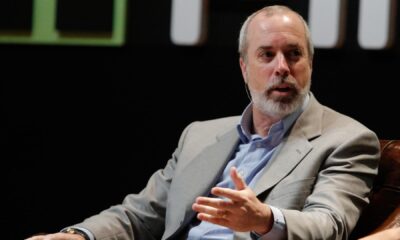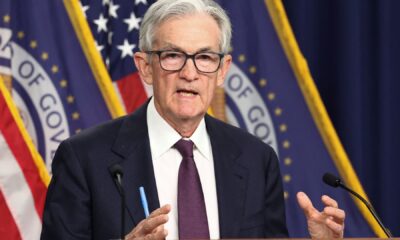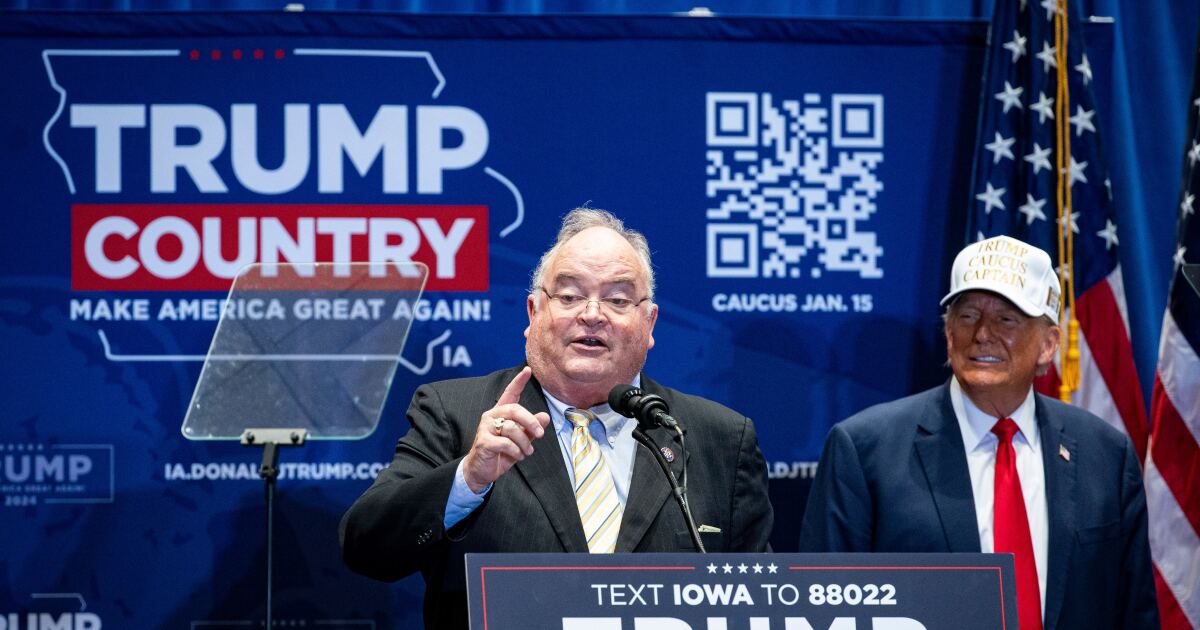The very richest Americans are among the biggest winners from President Joe Biden’s time in office, despite his farewell address warning of an “oligarchy” and a “tech industrial complex” that threaten U.S. democracy.
The 100 wealthiest Americans got more than $1.5 trillion richer over the last four years, with tech tycoons including Elon Musk, Larry Ellison and Mark Zuckerberg leading the way, according to the Bloomberg Billionaires Index. The top 0.1% gained more than $6 trillion, Federal Reserve estimates through September show.
Biden warned of “a dangerous concentration of power in the hands of a very few ultra wealthy people,” in his speech from the White House on Wednesday. “Today, an oligarchy is taking shape in America of extreme wealth, power and influence that literally threatens our entire democracy, our basic rights and freedoms, and a fair shot for everyone to get ahead.”
During his term, the super-rich grabbed a bigger share of a growing pie. Stock and housing markets boomed during a post-pandemic rebound that outpaced U.S. peers. It left all the income and wealth groups measured by the Fed at least a little better-off — and American households overall some $36 trillion richer, as of September, than when Biden took office.
Measured in straight dollars, that increase was slightly bigger than the one recorded under Biden’s predecessor and soon-to-be successor, Donald Trump. But inflation complicates the picture. The spike in prices over the last few years means that wealth rose faster during Trump’s term in real, purchasing-power terms, as did the median household income.
Under both presidents, the top U.S. billionaires did far better than almost everyone else.
The richest 100 Americans saw their collective net worth surge 63% under Biden, according to an analysis that covers the four years between his 2020 win and Trump’s re-election last November, and excludes another 8% jump since then.
The 100 largest fortunes combined now exceed $4 trillion — more than the collective net worth of the poorest half of Americans, spread over 66.5 million households. The share of U.S. wealth owned by the top 0.1%, at nearly 14%, is now at its highest point in Fed estimates dating back to the 1980s.
“Those at the top of the income distribution often do well during periods of strong economic growth,” Kimberly Clausing, a University of California at Los Angeles law professor and economist who served in Biden’s Treasury Department, said in an email. “Recent U.S. innovation and productivity growth have helped fuel these high returns.”
The U.S. stock market has nearly tripled over the last eight years, with several huge technology stocks leading the way, a trend that exacerbates inequality. The Fed estimates that almost nine-tenths of stock and mutual fund holdings are in the hands of America’s top 10%.
In his speech Wednesday, Biden warned of a “tech industrial complex that could pose real dangers to our country.”
Under Trump, technology billionaires on Bloomberg’s index doubled their net worth. Four years later their collective fortunes had nearly doubled again, to more than $2 trillion.
‘Almost a parody’
Among them is Musk, one of Trump’s most enthusiastic supporters, and also the biggest individual winner by far of Biden’s time in office.
Now holding an estimated fortune of $450 billion, Musk was worth barely $100 billion on election day 2020. Then his wealth surged, doubling in a couple of months to make him the world’s richest person by the time Biden was inaugurated. It’s since more than doubled again — including a $186 billion increase since Trump’s victory, which has left the owner of Tesla and X close to the levers of power.
Musk, who donated at least $274 million to elect Trump and other Republicans in 2024, was picked by the president-elect to co-lead a planned Department of Government Efficiency which aims to slash federal spending. He’s been throwing his weight around in European politics too, backing far-right parties in the U.K. and Germany.
“With wealth comes large amounts of power,” says Boston College law professor Ray Madoff. “With Elon Musk, it’s almost a parody.”
Three in five Americans believe rich people have too much political influence, according to a Pew Research Center survey released Jan. 9. Overall, 83% of respondents said the gap between rich and poor is a “big problem,” with 51% saying it’s a “very big problem.”
It’s one that has “dogged the country for about 125 years, since the first industrial revolution,” according to Madoff. One key difference from earlier periods, she says, is that the tax system is “no longer serving as a counterbalance to the growing wealth inequality.”
Biden ran for office promising to boost taxes on the wealthy and close loopholes.
In his first State of the Union address, the president said he disagreed with some fellow Democrats who had questioned whether billionaires should exist at all. “I think you should be able to become a billionaire and a millionaire, but pay your fair share,” he said, adding his goal was to “grow the economy from the bottom and the middle out” and to “reward work, not just wealth.”
Most Biden administration tax proposals weren’t adopted by Congress, however, including an idea to tax the unrealized gains of billionaires.
UCLA’s Clausing said several Biden policies did reduce wealth and income disparities, including the temporary expansion of the child tax credit, a new levy on stock buybacks and a corporate alternative minimum tax.
‘What goes up…’
A key source of gains for Americans lower down the ladder is housing — the other main driver of U.S. wealth, along with financial assets, and one that’s much more evenly distributed across households.
Fed data show the bottom 90% of Americans own 56% of real estate holdings, compared with less than one-third of total wealth. The value of those working- and middle-class properties is up 47% since Biden took office, more than twice the rate of inflation.
Left behind during both Trump and Biden’s terms are the least educated Americans. The share of national wealth held by people without college degrees slipped under both presidents, and now is at the lowest level on record.
That trend could be exacerbated by the adoption of artificial intelligence, with the potential to kill jobs while boosting corporate profits, according to Patrick Artus, a senior advisor at asset manager Ossiam. The future course of inequality “very much depends on your assumptions about the effects of AI,” he said.
John Cochrane, a senior fellow at the Hoover Institution, doesn’t see any harm to the economy or political system from billionaires with “paper wealth left invested in valuable companies that employ Americans and provide great products.”
Anyway, he says, these gains won’t necessarily last. “What goes up can come down.”


 Personal Finance1 week ago
Personal Finance1 week ago
 Personal Finance1 week ago
Personal Finance1 week ago
 Accounting1 week ago
Accounting1 week ago
 Finance1 week ago
Finance1 week ago
 Accounting1 week ago
Accounting1 week ago
 Economics6 days ago
Economics6 days ago
 Economics7 days ago
Economics7 days ago
 Finance1 week ago
Finance1 week ago












